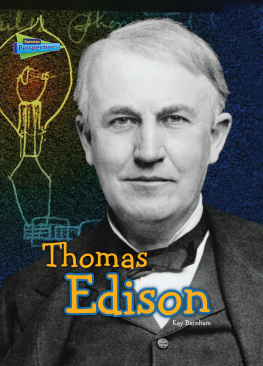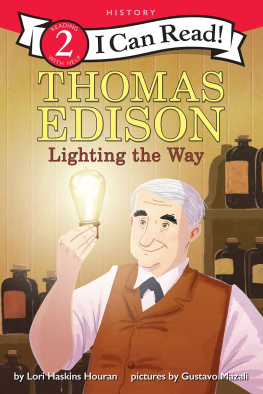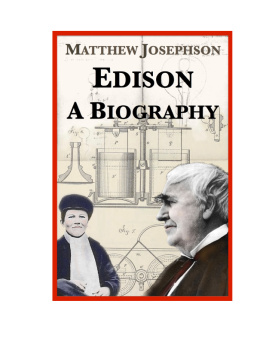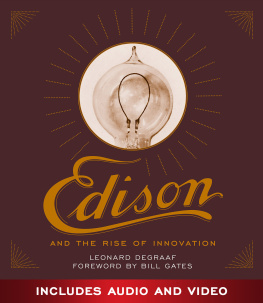copyright: Copyright by History Academy
All rights reserved.
This document is geared towards providing exact and reliable
information with regards to the topic and issue covered. The
publication is sold with the idea that the publisher is not
required to render accounting, officially permitted, or otherwise,
qualified services. If advice is necessary, legal or professional, a
practiced individual in the profession should be ordered.
From a Declaration of Principles which was accepted and
approved equally by a Committee of the American Bar
Association and a Committee of Publishers and Associations.
In no way is it legal to reproduce, duplicate, or transmit any part
of this document in either electronic means or in printed
format. Recording of this publication is strictly prohibited and
any storage of this document is not allowed unless with written
permission from the publisher. All rights reserved.
The information provided herein is stated to be truthful and
consistent, in that any liability, in terms of inattention or
otherwise, by any usage or abuse of any policies, processes, or
directions contained within is the solitary and utter
responsibility of the recipient reader. Under no circumstances
will any legal responsibility or blame be held against the
publisher for any reparation, damages, or monetary loss due to
the information herein, either directly or indirectly.
Respective authors own all copyrights not held by the publisher.
The information herein is offered for informational purposes
solely, and is universal as so. The presentation of the
information is without contract or any type of guarantee
assurance.
The trademarks that are used are without any consent, and the
publication of the trademark is without permission or backing
by the trademark owner. All trademarks and brands within this
book are for clarifying purposes only and are the owned by the
owners themselves, not affiliated with this document.
Disclaimer
All erudition contained in this book is given for informational
and educational purposes only. The author is not in any way
accountable for any results or outcomes that emanate from
using this material. Constructive attempts have been made to
provide information that is both accurate and effective, but the
author is not bound for the accuracy or use/misuse of this
information.

THOMAS EDISON
Biography : a Life from Beginning to End, with all his Inventions and Secrets
By History Academy
Narrated by Leonard Grey
Contents
CHAPTER ELEVEN: THE SOUND TELEGRPH
INTRODUCTION
The Modern World was not invented by Thomas Edison. However, he was present at creation, a significant figure in organizing and developing the national markets, communications and power systems, and entertainment industries in America. His name stands for imaginative innovation one hundred and fifty years after his birth and years after his death and his electric lamp symbolizes a bright idea, much enjoyed by cartoonists and marketers. The 1,093 U.S. list Any other inventor remains unchallenged over patents. That many people think we owe our way of life to his ideas is a tribute to his skills as an entrepreneur, businessman and promoter.
What made Edison so incredibly successful? He was by all accounts a genius inventor but there were several other fine, smart contemporary inventors, largely forgotten now: Elisha Gray and George Phelps in telegraphy; Emile Berliner in telephony and sound recording; Edward Weston in electrical instrumentation; Elihu Thomson, Frank Sprague, and Nikola Tesla in electrical power and lighting. In the breadth of his achievements, Edison outshone them all, and the public reputation he received.
He expanded the notion of creativity to encompass much more than just embodying a concept in a working artifact. His dream included what the twentieth century will call innovation invention, science, production, and marketing. Also, he combined a prodigious imagination with a canny sense of the mainstream press' emerging power, and the secret to its historical significance lies therein.
CHAPTER ONE: CHILDHOOD AND EARLY LIFE
Since he was a little boy, Thomas Alva Edison exhibited the characteristics of a true American prodigy, fundamentally curious and restless at the same time, hungry to discover the limits of his life and intrigued by the new age of technology that flourishes around him. He would come to represent not only the age of innovation and technology, an era of science-based manufacturing, but the American dream itself, growing from humble beginnings in a canal city to a corporate billionaire whose son would become his adopted state's governor, New Jersey. But none of this was evident to Sam and Nancy Edison on the night of the birth of their son Thomas.
The birth of Edison was outstandingly inauspicious. However, the winter could not dampen the enthusiasm of the Edison family at the birth of a healthy baby boy on February 11, 1847, in their brick home on a bank overlooking the Huron River Valley in Milan's small northeastern Ohio town.
Sam and Nancy Edison named their seventh child Thomas Alva, an adorable round face, dark eyes, and a dark hair surprise. He may have looked like many other babies, but he was meant to be different. He was interesting even as a newborn and seemed particularly intrigued by the world around him, by its colors and sounds, and also by the touch of the fabrics that swaddled him up. He was among the first generation in the Edison family of natural-born Americans.
In 1837, Samuel Edison had fled Canada to avoid capture for Ohio in a frontier revolt. He was followed by Nancy in 1841. They settled in Milan, where the population had increased from 500 to 1300 between 1849 and 1851. This fast development was due in part to the building of the Milan Canal, which opened in 1839 and transported tons of grain, corn bushels, and thousands of pounds of other products and goods back east. Milan, on the Huron River, also became a shipbuilding center, a significant manufacturing center when a network of canals linked the region, requiring barges to move goods. Once the railroads were developed and prospered, however, rail transported more and more of the goods, which was faster and cheaper. Like many river towns in the mid-nineteenth century, Milan had been bypassed by the railroads and lost trade. The importance and profits of the Milan Canal decreased, and companies suffered from waterway transportation, construction materials, and barge construction. As a result, residents started losing jobs and searching for other places where they could find work.
That year, 1847, the Edison family was not very well off. It was a time when tragedy and bereavement were too common aspects of daily life in the nineteenth century when death often came in the early years. Many child illnesses were fatal at a time of poor medical treatment. Infant mortality rates were high, and mother deaths from infections and hemorrhage were often the result of childbirth. Thomas Alva was born the same year, and three other Edison kids died. The Edison family followed the exodus as Milan's population shrank, headed west, and settled in the larger community of Port Huron, Michigan. There, Sam Edison restarted the lumber and grain company in Milan which had once been profitable. Due to the influence of the railroad on rising towns and new cities, demand for building materials was a growing business, and the Edisons did well.













